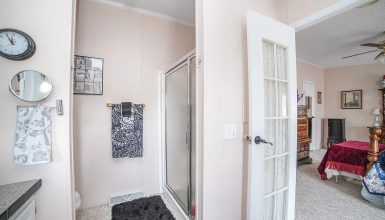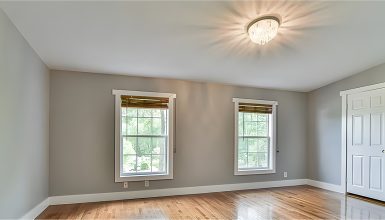The quick answer is yes, but—and it’s a big but—it has to be done right. Picture this: proper installation, the right type of wood stove, and a healthy dose of common-sense safety measures. Mess up any one of these, and you’re asking for trouble. You see, mobile homes have specific regulations and unique structural elements that can make a wood stove risky if you ignore the rules. So, while it’s possible to install a wood stove in your mobile home safely, there are essential guidelines you’ll need to follow. Stick around because we’re diving deep into everything you need to know to make that wood stove dream a safe and warm reality.
Regulations and Legal Guidelines
Let’s talk legal stuff—but don’t sleep just yet! When putting a wood stove in a mobile home, the law isn’t just a bunch of red tape; it’s your safety net. First, the HUD code is a federal standard that sets the scene. HUD stands for the U.S. Department of Housing and Urban Development, and they’re the folks who say your wood stove must be “mobile home approved.” Don’t even think about skipping this step; it’s non-negotiable.
But wait, there’s more! Each state and sometimes even local municipalities can have their own rules. You might need permits or inspections, which vary from place to place. And here’s a pro tip: check in with your mobile home park, too. They may have additional requirements or, heaven forbid, restrictions that say “no wood stoves allowed.”
So, it’s not just a free-for-all where you buy a stove and pop it in. Nope, you’ve got to do your homework. Make friends with your local building inspector and get the lowdown on what you can and can’t do. Trust me, playing by the rules now saves you many headaches later.
Types of Wood Stoves for Mobile Homes
First up, let’s talk EPA-certified stoves. The Environmental Protection Agency sets emissions standards, and you want a stove that meets or beats these. Why? An EPA-certified stove is not only eco-friendly but also burns more efficiently. We’re talking more heat with less wood, and who doesn’t want that?
Size is your next big decision. In a mobile home, space is at a premium. The stove you choose has to fit well and still leave room for those all-important clearances to prevent overheating. We’re aiming for Goldilocks here: not too big, not too small, but just right.
Material-wise, you’re typically looking at cast iron or steel. Cast iron has that old-world charm, but it takes a while to heat up and cool down. On the other hand, steel is more modern and heats up and cools down faster. Both work well; it depends on your style and patience.
Now, let’s talk bells and whistles. Some wood stoves have extras like a blower to distribute heat or a cooking surface. Think about what features matter most to you, but remember, the primary goal is safe and efficient heating.
Choosing the right wood stove isn’t just a matter of style or budget; it’s about safety and efficiency, too. So take your time, ask lots of questions, and choose wisely!
Proper Installation
You’ve navigated the maze of laws and picked the perfect stove. High five! But before you start imagining those cozy winter nights, there’s a crucial step we can’t skip: proper installation. Don’t consider making this a weekend DIY project; this job is for the pros.
First things first, you need a certified technician to install your stove. Why certified? These folks know the ins and outs of mobile home structures and fire safety. They’re trained to follow all the necessary regulations so you can sleep well, knowing your stove isn’t a ticking time bomb.
Now, let’s chat about clearances. That’s the space between your stove and anything that could catch fire—walls, furniture, you name it. Your installer will know the exact measurements, but just so you’re in the loop, we’re usually talking about several feet, not inches. You’ll also need heat-resistant barriers like fireproof wall shields. These barriers help contain the stove’s heat, making it even safer.
But we’re not done yet! Your stove will need a proper venting system, too. The chimney should be to spec and installed straight up through the roof. No shortcuts here, folks. Plus, you’ll need a hearth pad under the stove for added fire protection.
Let’s not forget the final touches—ensuring your stove is level and stable. The last thing you want is a wobbly stove, especially in a mobile home that might be, you know, mobile!
So, do yourself a favor and don’t skimp on proper installation. The investment in professional help pays off big time in peace of mind. And when that first cold snap hits, you’ll be all set for some severe, cozy, worry-free time!
Ventilation and Air Quality
So, you’re all set up with a professionally installed, picture-perfect wood stove. It’s time to strike a match and get toasty, right? Well, almost. Let’s pause and talk about something super important: ventilation and air quality. Yep, your wood stove needs to breathe, just like you do!
First up: the chimney. This isn’t just a tube for smoke to escape; it’s a crucial part of your wood stove system. You’ll need a special chimney for mobile homes to handle higher temperatures. Oh, and height matters, too! A taller chimney will draw air better, making for a cleaner, more efficient burn.
Now, let’s chat about fresh air intake. Modern, efficient stoves often come with a built-in fresh air intake, pulling air from outside directly into the stove. This makes for better combustion and keeps indoor air quality tip-top. If your stove doesn’t have one, you can usually add it on. Trust me, it’s worth it.
And don’t even think about skipping out on smoke detectors and carbon monoxide alarms. Place them near the stove and in sleeping areas. They’re your first defense against potential dangers, giving you a heads-up before things get dicey.
But let’s not forget maintenance. A dirty stove and chimney can affect air quality and become a fire hazard. So keep them clean! Regular chimney sweeps and stove cleanings will keep everything running smoothly and safely.
The bottom line is that good ventilation isn’t just a luxury but a must. Investing in proper airflow and regular maintenance will keep your cozy mobile home safe and breathable. So take a deep breath, knowing you’ve got this covered!
Safety Measures
You’ve got your stove; a pro installs it, and your ventilation is on point. But before you strike that first match, we’ve got one last topic to cover: safety measures. Think of this as the seatbelt to your wood stove road trip. Safety first, folks!
Kicking things off are fireproof materials. I’m talking about barriers like fire-resistant wall shields and hearth pads. These aren’t just for show; they protect your walls and floors from the intense heat a wood stove can release. It’s like having a superhero shield between your stove and mobile home.
Now, let’s talk about tools of the trade: fire extinguishers. You’ll need one and not just any old extinguisher. Go for a class A, B, or C extinguisher rated for all types of fires. Keep it within arm’s reach of the stove but not so close it becomes a fire hazard. Have you got kids or pets? Make sure they know the stove is a no-go zone. Setting boundaries—literally with a safety gate or figuratively with stern warnings—keeps everyone safe.
Maintenance, maintenance, maintenance! A well-kept stove is a safe stove. Regularly remove ash buildup, check for wear and tear, and schedule those chimney sweeps. If you’ve got a blower or fans, keep them dust-free to ensure they operate efficiently.
And let’s not forget to keep flammable items like papers, curtains, and even certain types of wood well away from the stove. It might seem obvious, but it’s easy to forget when rearranging furniture or tossing another log on the fire.
In short, safety measures aren’t just optional add-ons; they’re non-negotiables. Making them part of your wood stove routine ensures that the only thing you’ll have to worry about is running out of marshmallows for your hot cocoa. Is safety locked in? Now, bring on the cozy!

















